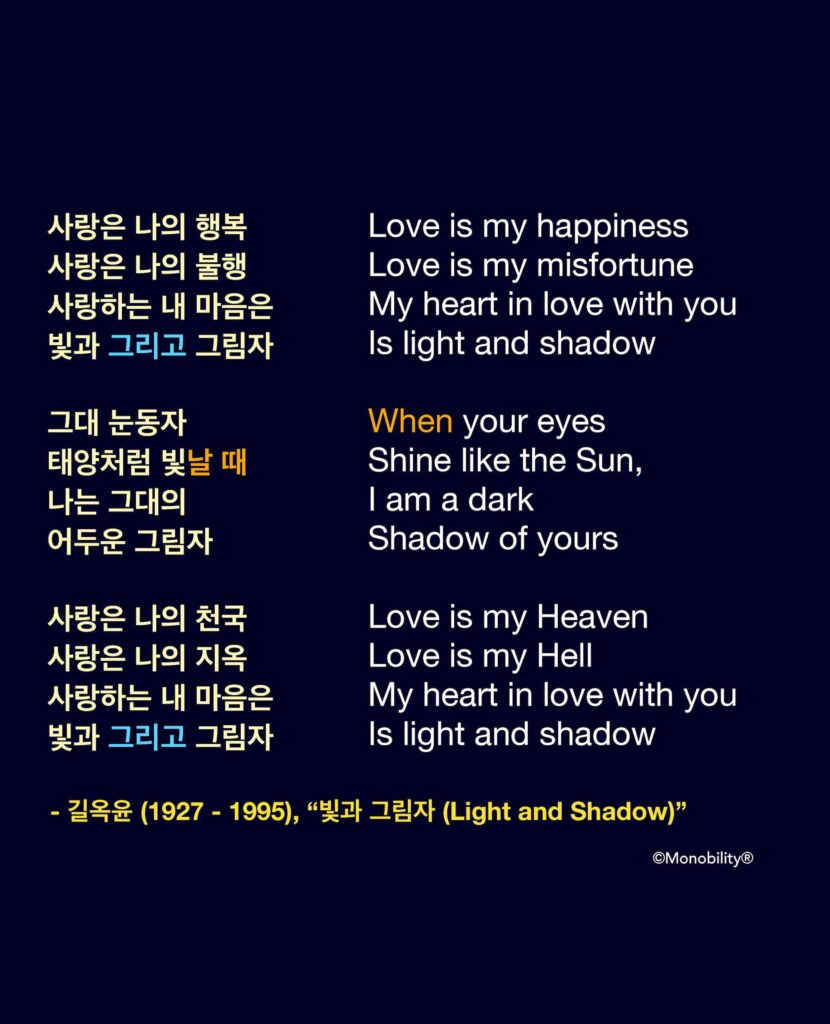- Here is a list of basic conjunctions in Korean. I selected only the ones that are not “particles” or endings. They function just as English conjunctions.
- 그리고 = , And
- 그래서 = , So ( = therefore)
- 그러므로 / 따라서 = Therefore, [ Formal; mostly used in written Korean or for speeches / presentations ]
- 그렇지만 / 하지만 = , But
- 그러나 = However, [ Formal; mostly used in written Korean or for speeches / presentations ]
- 그런데 / 근데 = By the way,
- 그래도 = Regardless, still
- 게다가 = Moreover, besides
- 또는 / 아니면 = , Or
- 왜냐하면 / 왜나면 = Because
- 반면에 = On the other hand,
- A 뿐만 아니라 B-도 = Not only A, but also B…
- Conjunction “When … “ = -ㄹ 때
“… 때” would be the most concrete and clear way to say a subordinate clause “When …” in Korean. In both present and future tenses, the verb preceding “때” ends with “-ㄹ”.
- 그대가 빛날 때 나는 그대의 그림자요 = When you shine, I am your shadow.
- 퇴근할 때 꼭 전화해 주세요 = Please give me a call when you leave the office.
[Korean speakers would never say “퇴근하는 때”, just as no English speaker would say “when you will leave the office.”]
In past tense, the verb preceding “때” conjugates with “-ㅆ을”:
- 그대가 빛났을 때 나는 그대의 그림자였소 = When you shined, I was your shadow.
- 내가 퇴근했을 때 누군가 아직 일하고 있었어요 = When I left the office, there was someone still working.
[Colloquially, the present/future form “…ㄹ 때” can be used in the past tense situations as well, since the main clause verb is always conjugated in past tense: “내가 퇴근할 때 누군가 아직 일하고 있었어요.” ]

Check out our Facebook for much more:


